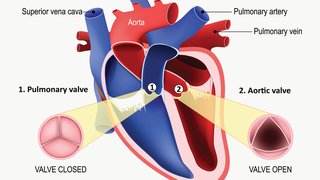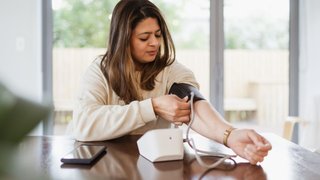
For most patients, the procedure to implant a pacemaker is fairly straightforward. But for Dennis McCabe, 69, it was anything but. Dennis came to UT Southwestern in 2016 for an autoimmune disease crisis and developed severe blood infections that attacked the two medical devices in his chest. His multiple conditions required specialized therapy, including implantation of an advanced pacemaker no bigger than a bullet.
Though his situation was critical, Dennis battled through his infection, multiple surgeries, and recovery with a smile on his face. His positive attitude and perseverance have been inspirational for those of us who have had the pleasure to work with him. I’ve invited him to share his story below.
Dennis’ story
The day my multiple health problems collided
Long before I came to UT Southwestern, I’d lived with multiple health conditions:
- I had a pacemaker implanted in the left side of my chest to treat my atrial fibrillation (AFib), a heart rhythm disorder.
- I have myasthenia gravis, a chronic autoimmune disorder that causes muscle weakness.
- I had a tumor on my thymus gland called a thymoma, which happens to about 10 percent of people with myasthenia gravis.
- As part of my thymoma treatment, I had a port implanted in the right side of my chest to receive regular infusion therapy.
I had a procedure to remove the thymoma, but the tumor came back. That’s when I was referred to UT Southwestern, where I received radiation treatment. Afterward, I decided to get all my care from the experts here.
So, I was going about my life with two medical devices, one on either side of my chest. Then came the tough part. I developed a blood infection, and both my port and my pacemaker got infected. One of my cardiothoracic surgeons, Michael Jessen, M.D., had to remove them both. But the pacemaker is the only thing that keeps my heart beating, so Dr. Jessen had to put in a temporary pacemaker to keep me alive.
At that point, we didn’t want to risk implanting another pacemaker while I was being treated for the blood infection. We were still discussing the next steps when Dr. Daniels came to see me with an advanced treatment option.
Enter the leadless pacemaker
Dr. Daniels recommended giving me a newer device called a leadless pacemaker. Traditional pacemakers have two units: a battery and computer pack that’s implanted just under the collarbone, and leads, or wires, that connect the pack to the heart. A leadless pacemaker, however, is self-contained. The entire device is about the size of a bullet.
The risk of infection and the risks involved with implantation are much lower for leadless pacemakers than traditional pacemakers. We agreed that leadless was the way to go, but there was a problem. The technology was so new at the time that my insurance company wasn’t going to cover it. Thankfully, the UT Southwestern team worked it out with my insurance provider to cover part of the cost, and I was able to have the surgery.
Dr. Daniels implanted my leadless pacemaker through a thin, flexible tube called a catheter, He threaded the catheter through a vein in my leg and up to the bottom of my heart and deposited the pacemaker. Then he removed the catheter, and that’s all there was to the procedure.
All told, I was in the hospital for two months to recover from the dual device extraction, the blood infection, and the leadless pacemaker implantation. Then I spent another month at a long-term care hospital for rehabilitation and recovery. I consider myself lucky! Everything went smoothly, and the doctors were able to care for my many conditions during my stay.
I refuse to feel sorry for myself
My new leadless pacemaker works wonderfully. I’ve come a long way from where I was when I first was referred to Dr. Jessen and Dr. Daniels. Every three weeks, I come from my home in Keller, Texas, about 30 miles away from Dallas, to get infusion therapy for my myasthenia gravis.
It’s funny – when I was younger, I don’t think I ever used the term “quality of life,” especially when I was talking about myself. Now it’s all I think about, and my quality of life is pretty good. I can’t do all the things I used to do, but that’s just part of the aging process. Can I walk? Can I drive? Can I still do some of the things I enjoy? Yes!
I’ve been dealt some tough hands, but I refuse to feel sorry for myself. You have two options when things are tough: You can let life get you down, or you can say to yourself, “We’re going to work through this and go forward.” This is the way my body is made, and I’m going to stay positive and lean on the experts to help me deal with the curveballs my health throws my way.
The future of heart pacing technology
Dennis’ story is a great example of how patients can benefit from advanced cardiac technologies. We can offer treatments, such as leadless pacemakers, that are available only at select heart centers because we stay on the cutting edge of research. Our doctors participate in clinical trials to evaluate the latest devices and offer our patients more options.
Leadless pacemakers are among the newest advances in heart pacing technology. I have implanted more leadless pacemakers than any other doctor in the Southwest (including Texas, Arizona, and New Mexico), and I think these devices will continue to be improved for years to come. Future leadless pacemakers and the tools we use to implant them will be even smaller, which will open their use to more patients. One day, these devices might even completely replace traditional pacemakers.
I’m so glad Dennis is doing well. His great attitude will carry him far as he continues on his heart care journey.
Sign up for One Heart email notifications so you don’t miss our latest heart-related stories.










